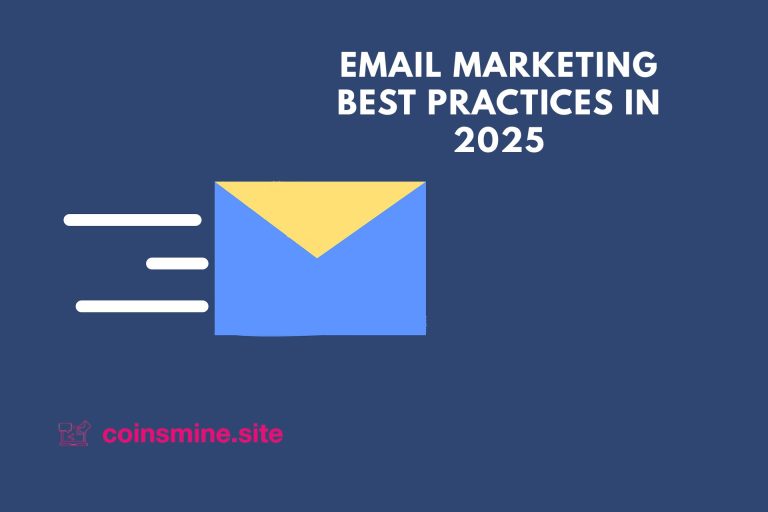Email Marketing Best Practices in 2025: Effective email campaigns increasingly involve more than just sending out newsletters due to changing consumer expectations, more stringent privacy regulations, and cutting-edge technology like automation and artificial intelligence.
Value-driven content, mobile optimization, and personalization must be given top priority by businesses in order to maintain audience engagement and foster trust. Keeping up with the most recent email marketing best practices is crucial for increasing engagement, conversions, and enduring client loyalty in today’s fast-paced digital landscape, regardless of the size of your company.
Email Marketing Best Practices in 2025
With a high return on investment (ROI) and direct audience access, email marketing is still one of the most successful digital marketing platforms in 2025. Email is still popular, especially when used properly, even in the age of social media, chat-based platforms, and AI-driven content. But the struggle for inboxes is more intense than ever. Businesses must adhere to modern best practices influenced by emerging technologies, more stringent privacy regulations, and shifting customer expectations if they want to stand out and provide tangible outcomes.
(1) Build a Permission-Based List.
Consent is crucial in 2025. Sending emails to individuals without their express consent can result in fines and harm your company’s reputation due to changing data privacy laws like the CCPA, GDPR, and others around the world. Use opt-in techniques at all times, like
-
Sign-up forms on your website
-
Lead magnets (e.g., free guides, checklists)
-
Exclusive offers or newsletters
Avoid buying email lists or scraping addresses—these are outdated and legally risky tactics.
(2) Focus on Quality Over Quantity.
Inbox flooding is ineffective. Relevance is more important than frequency. Segment your list and tailor your approach rather than sending out weekly promotional blasts to everyone. Subscribers will remain interested in high-quality content that entertains, educates, or solves an issue.
-
Purchase behavior
-
Email engagement history
-
Demographics
-
Interests or product preferences
In 2025, hyper-personalization is expected—not optional.
(3) Craft Compelling Subject Lines.
Best practices include:
-
Keeping it short (under 50 characters)
-
Creating curiosity
-
Using action words
-
Avoiding spammy phrases (e.g., “Free!!!” or “Act now!”)
(4) Optimize for Mobile Devices.
Mobile devices now open more than 70% of emails. Your email will probably be ignored or removed if it is not responsive to mobile devices. Use:
-
Responsive design
-
Short paragraphs and bullet points
-
Large, tappable buttons
-
Single-column layouts
(5) Use AI to Improve Performance.
Email marketing is changing thanks to AI tools. AI boosts productivity and engagement in a variety of ways, from creating content and subject lines to forecasting the best times to send. Leading email platforms in 2025 will have integrated AI capabilities such as:
-
Predictive analytics (to send at the best time)
-
Content optimization
-
Smart segmentation
-
Automated follow-ups based on behavior
Use these tools to create more relevant, timely, and effective campaigns without overwhelming your team.
(6) Respect Inbox Fatigue and Offer Easy Unsubscribes.
More than ever, subscribers are guarding their inboxes. People will unsubscribe—or worse, flag you as spam—if your emails seem too frequent or your material is not valuable.
Allowing subscribers to control their preferences (e.g., how often they hear from you)
-
Including a clear unsubscribe link
-
Honoring unsubscribes immediately
Transparency builds trust and keeps your list healthy.
(7) Track Metrics That Matter.
Email marketing success isn’t just about open rates. In 2025, smart marketers focus on deeper metrics like
-
Click-through rate (CTR)
-
Conversion rate
-
Bounce rate
-
Unsubscribe rate
-
Revenue per email
A high open rate but low CTR, for instance, could indicate that your subject lines are strong but your content needs improvement.
Conclusion.
In 2025, value, personalization, and consent will be key components of email marketing. Businesses may create enduring customer relationships and generate steady returns on investment by utilizing AI technologies, delivering mobile-optimized content, leveraging smart segmentation, and creating a permission-based list. Thoughtful, customer-focused emails are what stand out and leave a lasting impression as digital noise becomes louder. Your email campaigns will not only endure but also flourish in the upcoming years if you adhere to these best practices.



